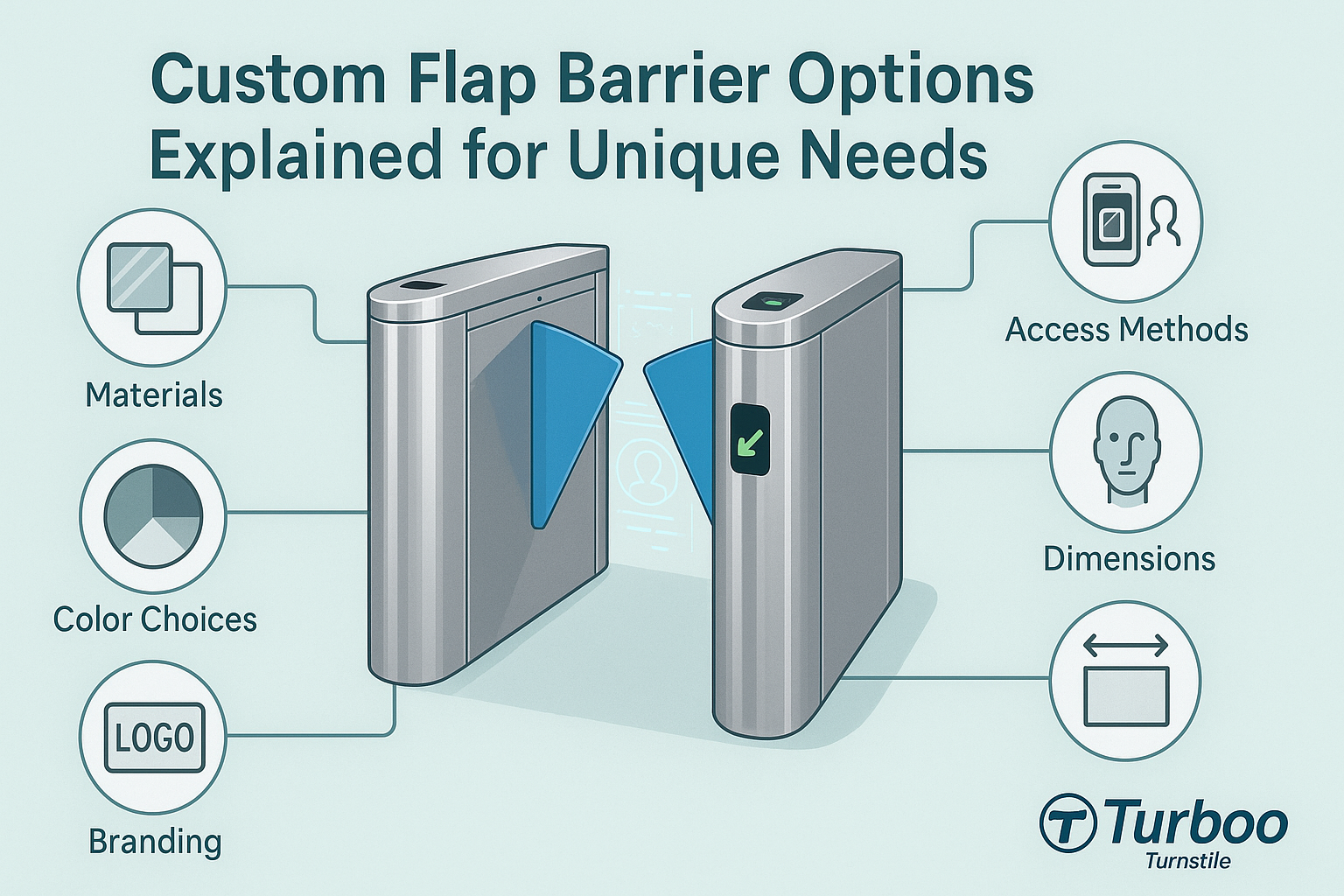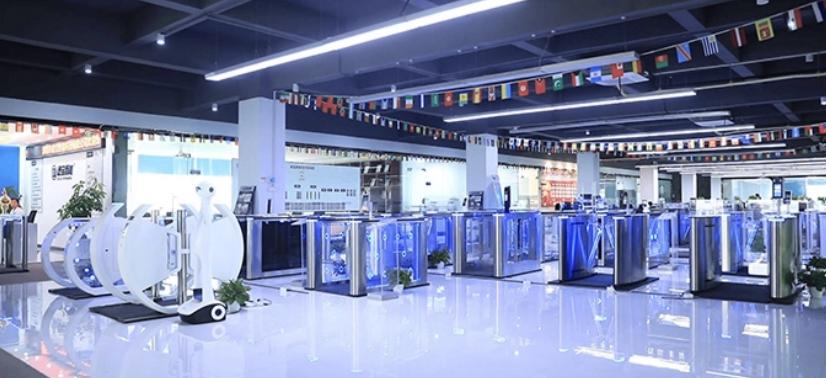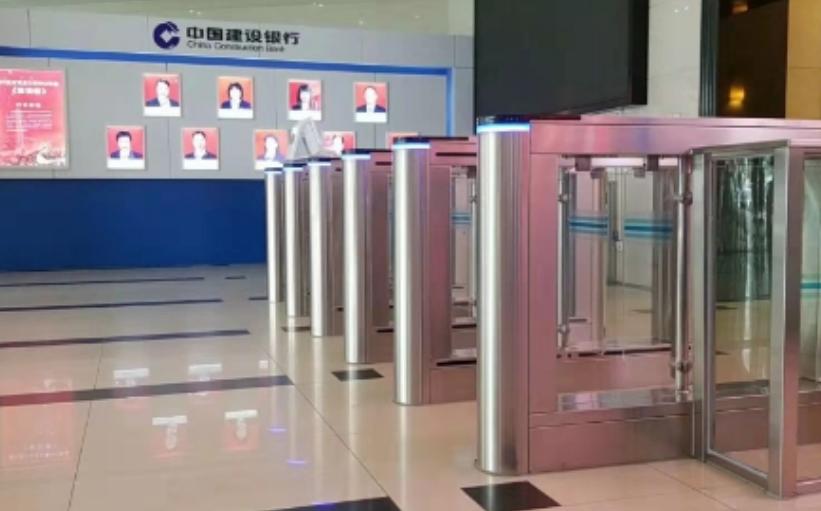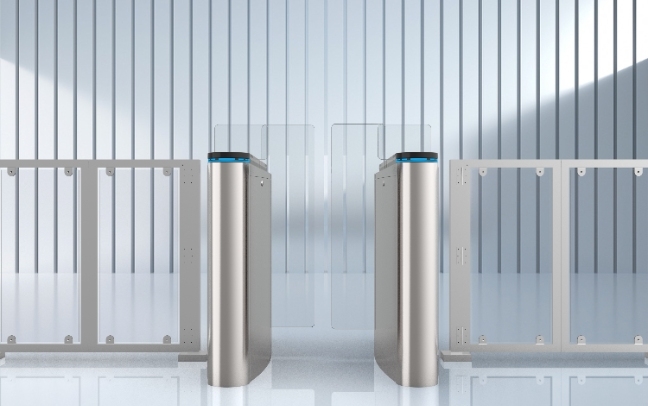Custom Flap Barrier Options Explained for Unique Needs


Every building is different. So why should they all have the same type of entry system? Whether you’re designing a public transportation hub or a modern office lobby, how people move through your space impacts both security and user experience. That’s where a custom flap barrier comes in. These aren’t just off-the-shelf gates—they’re tailored solutions built around your specific layout, flow, and safety needs. From selecting the right materials to integrating advanced access features, every detail can be customized to fit your environment.
With this guide, we’ll walk you through what makes a custom flap barrier unique, what options are available, and how to approach the customization process. Whether you’re a facility manager planning a new security system or an architect incorporating modern aesthetics, this article gives you the practical knowledge you need to make informed decisions.
Understanding the Need for Customization
Why Standard Barriers May Fall Short
Standard flap barriers are designed for general applications. They may work in some settings, but often, they fail to address key specifics. For instance, the flap size might not accommodate wheelchair access. Or the aesthetics might clash with a high-end hotel lobby. Generic systems often lack compatibility with preferred access methods, which leads to workarounds and, ultimately, frustration.
Most importantly, standard barriers aren’t optimized for the volume and type of traffic at your site. A barrier that works fine in a corporate building may struggle in a stadium or university, where throughput needs are drastically different. Lack of adaptability can result in bottlenecks, misuse, and even safety hazards during high-traffic periods.
This is why customization matters. A tailored solution is built not just to fit into your space—but to elevate it. Think of it as the difference between buying a suit off the rack versus having one tailored: both cover you, but only one truly fits.
Real-World Examples of Unique Access Requirements
Let’s look at a few scenarios:
- Corporate Headquarters: A sleek look is essential. The flap barrier should complement the interior with glass panels, stainless steel, and biometric fingerprint scanners for authorized entry.
- University Campus: Wide flaps are needed to accommodate students with mobility aids. Speed and volume control are key during class changes.
- Airport Terminal: Must integrate with existing boarding pass scanners. Needs high throughput and automatic resets to prevent unauthorized entry.
Each of these settings has distinct goals—some prioritizing aesthetics, others focused on function. A custom flap barrier ensures those needs are fully met without compromise.
What Sets a Custom Flap Barrier Apart
Beyond Off-the-Shelf Solutions
What makes a custom flap barrier truly distinct? It’s not just a matter of size or shape. Customization allows for precision alignment with user flow, operational needs, and visual identity. Whether that means extending the flap opening for carts and strollers, or integrating it into a curved wall layout, a tailored barrier does more than control access—it enhances it.
Custom barriers also support multi-modal access. They can work with QR codes, RFID cards, or even facial recognition—whatever best fits your security protocols. This flexibility makes them a smart investment in future-proofing your facility.
In many cases, standard models force facilities to compromise. But with custom systems, every part—from housing design to software logic—can be tailored. The result is not just improved functionality, but also reduced maintenance issues, better flow, and higher user satisfaction.
How Design Flexibility Improves Access Management
Access management is more than opening and closing a gate. It’s about controlling how people interact with your space. Design flexibility allows you to guide foot traffic, segment visitor groups, and ensure safety protocols without slowing things down.
Want to separate employees from visitors automatically? Add access zones. Need to improve accessibility? Install adjustable-width flaps. Looking to boost your brand’s presence? Integrate color-matched materials or custom logos on the barrier panels.
With custom flap barriers, design becomes strategic. It supports not just the physical structure but the operational goals of your facility. That’s why leading facilities opt for custom systems—they’re not just barriers, they’re smart access solutions.
Popular Customization Options to Consider
Size and Configuration Adjustments
No two spaces are the same, and neither should be your barriers. Customization allows you to adjust the size of the barrier housing, flap width, and passage height. These adjustments ensure your barrier fits snugly into your available space while allowing comfortable, efficient user movement.
Want to install a barrier in a narrow corridor? Slim housing units will help. Need to accommodate large items like carts or wheelchairs? Go with extended-width flaps. Even the angle at which the flaps open can be customized to better suit your layout.
Modular configuration is another key factor. Multiple lanes can be linked to manage directional flow—ideal for lobbies, stations, or arenas. Whether you’re dealing with tight entry points or wide, open foyers, barrier customization provides the flexibility you need.
Flap Material Choices: From Glass to Polycarbonate
The flaps themselves come in several material options. Common choices include:
- Tempered Glass: Offers a premium look with strong durability. Great for offices and high-end venues.
- Polycarbonate: Highly durable, scratch-resistant, and ideal for high-traffic or outdoor areas.
- Acrylic: Lightweight and cost-effective, suitable for lower-volume indoor environments.
Choosing the right flap material impacts both aesthetics and function. Glass feels high-end but may not be ideal for rugged environments. Polycarbonate is tough but might lack the finesse some designers want. Knowing your space helps you make the right call.
Check material options here: Flap Barrier Materials
Finish and Aesthetic Integration
A well-designed flap barrier doesn’t just work well—it looks good, too. With custom finishes, you can align your barrier with your facility’s design language. Popular finishes include brushed stainless steel, powder-coated colors, matte black, or even wood veneer.
Want something more unique? Add LED accent lighting, glass etching with logos, or edge-lit flaps for a futuristic look. Aesthetic customization is particularly valuable in commercial spaces where branding and ambiance matter.
Whether you’re matching the barrier to marble floors or incorporating corporate colors, the goal is seamless integration. This turns a functional access point into a part of your building’s visual identity.
Material Selection: Matching Function to Form
Durability Considerations
When it comes to choosing materials for your custom flap barrier, durability should be top of mind. High-traffic environments like stadiums, airports, or metro stations require flaps and housings that can withstand constant use without degradation.
Metal housings, usually made of stainless steel or aluminum, offer robust protection and are resistant to corrosion. Meanwhile, flap materials like polycarbonate or reinforced glass are engineered to endure repeated impact and pressure without cracking or warping.
If your location is exposed to outdoor conditions, UV resistance, waterproofing, and rust-proof finishes are a must. Investing in the right materials at the outset reduces long-term repair and maintenance costs—and avoids operational downtime.
Aesthetic Alignment with Architecture
Integrating a custom flap barrier into your facility is not just about performance—it’s also about appearance. The right material should blend seamlessly with the surrounding architecture. This is especially important in upscale environments like luxury hotels, corporate headquarters, and art galleries, where visual harmony reinforces the space’s overall identity.
For example, in a minimalist office with glass walls and chrome accents, tempered glass flaps paired with polished stainless steel housing preserve the clean, modern look. In contrast, a school or hospital might prefer powder-coated steel in softer tones to reduce visual harshness and promote a calming environment.
Barrier systems can even include custom etching, color accents, or lighting that complements the existing design elements. This attention to detail not only enhances visual appeal but also builds trust in your access system—users intuitively recognize that a well-designed entry point reflects an organized, secure space.
Environmental Factors and Outdoor Use
Not all flap barriers are installed indoors. When your setup is exposed to the elements, material selection becomes even more critical. Outdoor units need to be weatherproof, rust-resistant, and capable of performing in fluctuating temperatures and humidity levels.
Housing should ideally be made of marine-grade stainless steel or treated aluminum. Flaps should resist UV exposure and temperature-related wear. Polycarbonate flaps, for instance, perform well in direct sunlight and resist shattering, making them ideal for outdoor or semi-outdoor settings like stadiums, amusement parks, and parking lot entry points.
Proper sealing and waterproof designs ensure that electronics, sensors, and motors stay protected. Choosing the right materials for your environment prevents premature failure and ensures a longer lifecycle for your access system—critical in harsh or high-use settings.
Exploring Access Control Technologies
Biometric Systems for High-Security Areas
Security isn’t one-size-fits-all. In sensitive environments like data centers, research labs, or government buildings, biometric access offers the highest level of security. Flap barriers can be integrated with fingerprint readers, facial recognition cameras, or even palm vein scanners to ensure that only authorized individuals pass through.
Biometric systems prevent card sharing and unauthorized access, enhancing compliance and accountability. They also eliminate the need for physical tokens, which can be lost or stolen. A custom flap barrier designed with biometric integration includes internal housing for readers, ideal flap alignment for facial scanning, and logic-based controls for rapid authentication.
This setup minimizes user delay while maximizing control. It’s particularly useful in dual-authentication settings, where biometric input is combined with ID cards or QR codes for added security layers.
RFID and QR Code Integrations
RFID and QR-based systems are popular for environments with high user turnover or visitor access needs. QR codes, on the other hand, are great for temporary access—think hotel check-ins, ticketing systems, or event entry.
Modern flap barriers can be customized with built-in RFID antennas or QR scanners, often placed directly into the housing or on auxiliary stands. These access methods streamline movement and reduce congestion by enabling fast, contactless entry.
The beauty of barrier customization lies in selecting the exact access technology that suits your operation. Need to support both permanent staff and daily visitors? Combine RFID and QR systems in a hybrid model, ensuring smooth access for everyone without multiple entry lanes.
Explore more access options
Hybrid Systems for Flexibility
Want the best of both worlds? Hybrid access systems are the future of smart entry. They allow multiple identification methods—biometric, RFID, QR, mobile app entry—within a single barrier. This is especially useful for multi-use facilities like corporate campuses or co-working hubs, where different user groups need different access paths.
Custom flap barriers support hybrid systems by integrating multiple reader types and coordinating them through unified software. This flexibility allows for conditional access—staff uses RFID, vendors use QR codes, and VIP guests use facial recognition—all on the same system.
It’s all about enhancing user experience and scalability. Hybrid setups are also easier to update as your access control policy evolves, making them a smart long-term investment.
Benefits of Custom Flap Barrier Solutions
Enhanced User Experience
When access is easy, intuitive, and responsive, users notice. With custom flap barriers, everything from flap speed to sound levels can be adjusted to create a smooth, welcoming experience. Sensors can detect the presence of individuals and open the barrier preemptively, reducing hesitation or confusion.
Queue management also improves with custom solutions. Multiple lanes can be set up for direction-based flow, or wide lanes added for strollers, luggage, or wheelchairs. Lighting cues, such as green arrows or red “X” signs, guide users clearly.
Overall, this results in faster throughput, fewer errors, and a better first impression. It tells people: this is a modern, efficient, and secure space—whether it’s a workplace, transportation hub, or venue.
Compliance with Accessibility Standards
Accessibility isn’t optional—it’s essential. Laws like the Americans with Disabilities Act (ADA) mandate that facilities accommodate people of all abilities. A custom flap barrier helps meet these requirements with wide lanes, gentle flap motion, and visual/audio indicators.
Visit this guide to learn more about accessibility
Custom barriers can include touchless activation, slower flap movement for those with mobility challenges, and even visual displays with audio prompts. These features go beyond compliance—they create dignity in access for everyone.
Facilities that invest in accessible solutions not only meet legal standards but also demonstrate a genuine commitment to inclusivity. This can enhance brand perception and foster trust among diverse users.
Brand Identity and Visual Continuity
In branded environments, every design element counts—including your flap barriers. With customization, you can add logos, color schemes, or design accents that reinforce your visual identity. The result? Cohesion, professionalism, and stronger brand recall.
Imagine a hotel that installs barriers with frosted-glass flaps etched with its emblem. Or a tech company with LED-lit flaps in their corporate colors. These details stand out and become part of the user experience, rather than an afterthought.
Custom finishes and materials also help your barriers match the tone of the space, whether that’s modern, classic, industrial, or artistic. It’s a subtle but powerful way to communicate your brand without saying a word.
Challenges and Considerations in Custom Designs
Cost and Budget Management
Customization comes at a price. But rather than viewing it as an added cost, think of it as a long-term investment. Still, it’s important to budget realistically. The final price depends on the number of lanes, type of material, complexity of the design, and integration with access technologies.
High-end finishes like glass or wood veneer will cost more than standard stainless steel. Biometric or hybrid systems add hardware and software expenses. However, many vendors offer tiered pricing based on configuration, so it’s possible to strike a balance between function and cost.
A good approach is to prioritize your must-have features first—then see what else fits the budget. It’s also wise to work with a vendor who offers scalable options so you can expand or upgrade later.
Maintenance and Service Planning
Every flap barrier—custom or not—requires regular upkeep. But a custom solution should also come with a custom maintenance plan. Ask your vendor what the service schedule looks like, what parts are covered, and how long it takes to get replacements.
Sensors, motors, and flaps all experience wear over time. Choosing high-quality components upfront minimizes breakdowns. Look for self-diagnosing systems that alert you when a part is misaligned or needs calibration.
Regular servicing ensures peak performance and extends the life of your investment. Don’t skip this step—it’s just as important as choosing the right design.
Lead Times and Installation Scheduling
Customized products naturally take longer to produce. Depending on the complexity of your design, lead times can range from 4 to 12 weeks. That’s why it’s crucial to plan early and coordinate with your construction or renovation timeline.
Clear communication with your vendor helps align production with installation needs. Factors like site prep, wiring for access systems, and testing should also be considered. A staggered delivery and install plan may be best for large projects or phased upgrades.
Step-by-Step Planning for Custom Flap Barriers
Assessing Site Needs and Traffic Volume
Before you even start thinking about materials or finishes, assess your site. Walk through it. Observe foot traffic. Are there bottlenecks? What types of users come through—staff, guests, students, or the public? Each group may need a different access method. A high-traffic venue like a stadium needs rapid throughput, while a corporate office values aesthetics and privacy.
Start with a traffic count during peak hours. Note how people move: do they come in clusters, or steadily throughout the day? Are there wheelchair users or people with strollers? Once you have the traffic profile, decide how many lanes you need and whether wide-access lanes should be included.
Use this phase to identify obstructions, architectural constraints, and environmental exposure. Are your entryways covered or exposed to the weather? Will the barriers need to integrate with existing IT infrastructure or access systems?
Only after this deep dive into your site needs should you move to the next stage.
Collaborating with Architects and Engineers
Once you know what your space demands, it’s time to bring in the experts. Architects can help ensure the design aligns with the building’s aesthetics and flow. Engineers help make sure the power supply, network cabling, and system integrations are in place.
During this collaboration, share detailed specs from the flap barrier manufacturer. This includes dimensions, mounting requirements, power needs, and system protocols. Ensure that the barrier design doesn’t block fire exits, emergency egress routes, or violate accessibility standards.
Customization also allows barriers to be tailored to curved walls, embedded into furniture, or even sunk into flooring for minimal visibility. These creative implementations require architectural input.
Having all stakeholders at the table ensures the system is both functional and beautiful—and avoids costly redesigns later on.
Choosing a Reliable Vendor
This is the make-or-break step. A custom flap barrier is only as good as the vendor delivering it. Look for providers with proven experience in custom projects and solid after-sales support.
Check portfolios, client reviews, and case studies. Ask if they provide mock-ups or 3D renderings of custom designs. Do they offer software support or just hardware? What’s the warranty like?
A reliable vendor will guide you through material selection, access technology integration, and long-term maintenance planning. They’ll also help you stay within budget and timeline, making the process smooth from start to finish.
For trusted providers, explore companies like Boon Edam, known for their custom solutions and technical expertise in secure access systems.
Real-World Case Studies of Custom Barrier Projects
Corporate Office: Glass + Biometric Entry
A multinational tech company wanted sleek, discreet security in its HQ. They chose a custom flap barrier with full-height tempered glass flaps and facial recognition scanners integrated directly into the gate housing. The result? A seamless, high-security entrance that blends with their minimalist interior design.
Employees simply walk up, get scanned, and pass through without touching anything. The system is connected to their internal HR database for real-time access management.
The client reported a 25% reduction in entry time and improved visitor impressions.
Transportation Hub: High-Speed Durable Flaps
A city metro station handles over 30,000 passengers daily. They needed a solution that was fast, durable, and integrated with ticketing systems. Their custom flap barriers used reinforced polycarbonate flaps and RFID ticket validation, with an auto-reset feature for failed entries.
To handle volume, barriers were configured in multi-lane setups, with directional indicators and barrier sensors tuned for speed.
Maintenance sensors alert staff before a malfunction occurs, reducing downtime and keeping queues moving.
Educational Facility: Accessibility Focused Design
A university redesigned its student center with inclusivity in mind. Their custom system featured extra-wide flaps for wheelchair and stroller access, soft-opening motors to reduce risk, and color-coded LED indicators for intuitive use.
All lanes used QR-based entry tied to student IDs, allowing real-time tracking of facility usage. Staff could override gates using mobile apps in case of emergencies.
By focusing on both function and fairness, the university ensured every student could use the space with dignity and ease.
Best Practices for Long-Term Success
Routine Maintenance Protocols
Just like any mechanical system, flap barriers need care. Custom or not, dust build-up, misalignment, and electronic faults can occur. A regular maintenance schedule—monthly or quarterly—can prevent small issues from turning into big problems.
Clean sensors, test access systems, recalibrate motors, and update firmware. Some barriers now come with built-in diagnostics that alert staff of performance issues before they cause failure.
Work with your vendor to establish a custom service plan, especially if your system includes advanced tech like biometrics or hybrid integration.
Staff Training and Access System Updates
Even the best system fails if users don’t know how to use it. That goes for staff, too. Your security team should be trained on how to respond to alerts, override the system when necessary, and troubleshoot minor issues.
System updates are equally important. Access databases, biometric profiles, and user credentials change over time. Ensure you have a policy for updating these systems regularly and securely.
A quick 30-minute staff refresher session every few months can make a big difference in day-to-day operations and emergency readiness.
Monitoring and Usage Analytics
Modern flap barriers aren’t just mechanical—they’re smart. They can log user entries, track usage trends, and flag anomalies. These analytics help identify peak hours, recognize security threats, and plan staffing accordingly.
Dashboards can show which access methods are most used, whether biometric systems are working efficiently, or if QR code users face frequent scan errors.
This data-driven approach improves both security and operations. And when combined with routine audits, it ensures your custom flap barrier continues to serve its purpose long-term.
Conclusion
A custom flap barrier isn’t just an access point—it’s an investment in better security, smoother traffic flow, and an improved user experience. Whether your priority is speed, security, branding, or accessibility, customization lets you build a solution that fits like a glove.
In a world where every facility is unique, generic solutions fall short. But with careful planning, expert collaboration, and the right vendor, a tailored barrier system can elevate both safety and design—making your space smarter, more secure, and more welcoming.
FAQs
What’s the lead time for a custom flap barrier?
Lead times typically range from 4 to 12 weeks depending on the complexity of the design, material choices, and technology integrations.
Are custom barriers ADA compliant?
Yes, when designed correctly. Custom barriers can include wide lanes, visual/auditory indicators, and gentle flap motion to meet ADA requirements.
Can I change access control types later?
Many custom barriers support modular upgrades. You can add or swap technologies like QR scanners, RFID readers, or biometric systems later.
Is there a minimum order for custom options?
Minimum orders depend on the manufacturer, but most offer single-unit customization for high-end or unique projects.
How do I start designing a custom solution?
Start by assessing your site needs, then consult with a vendor that offers flap barrier customization services. Collaborate with your architect or security team to finalize the specs.












